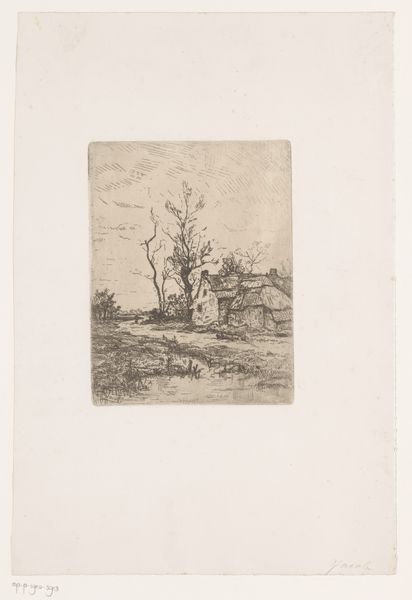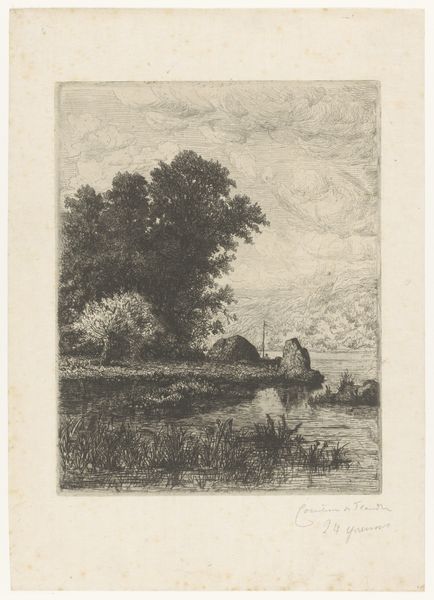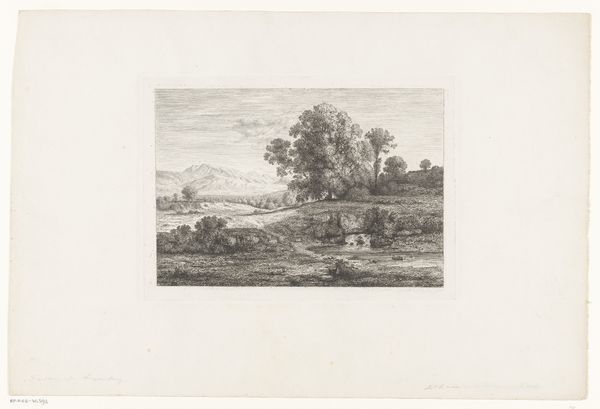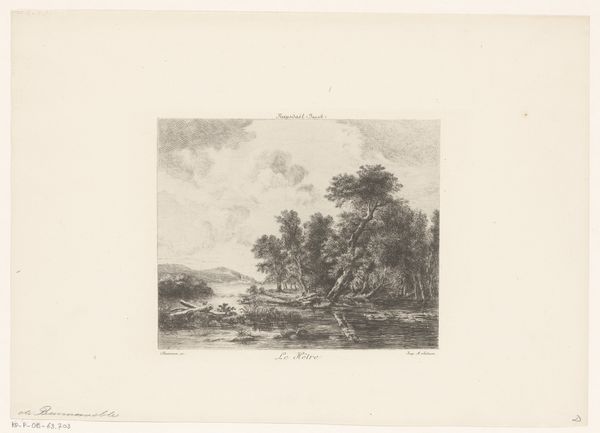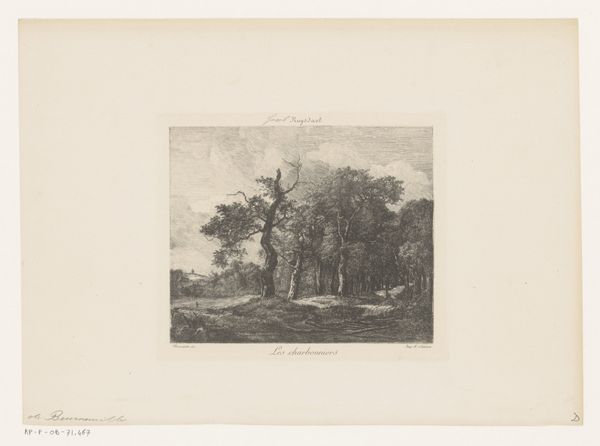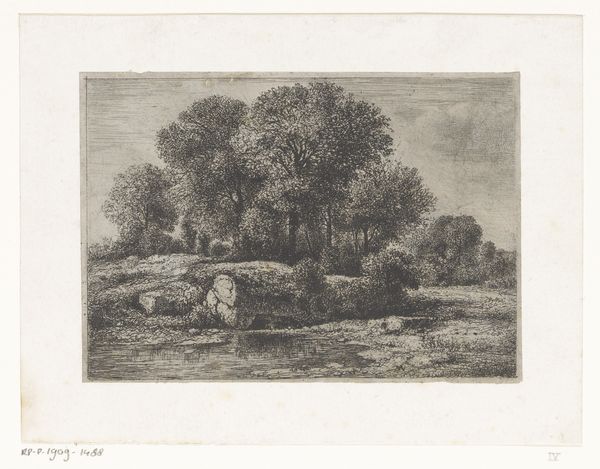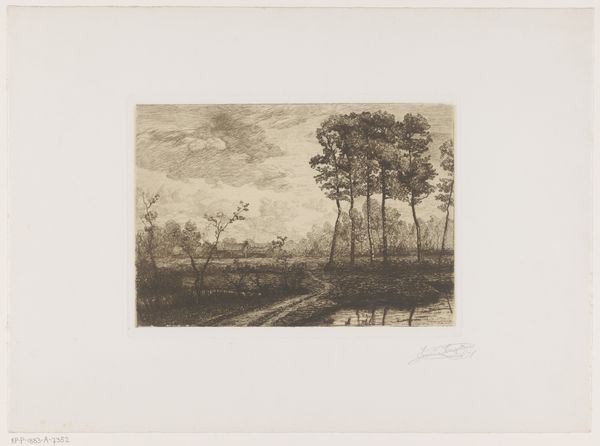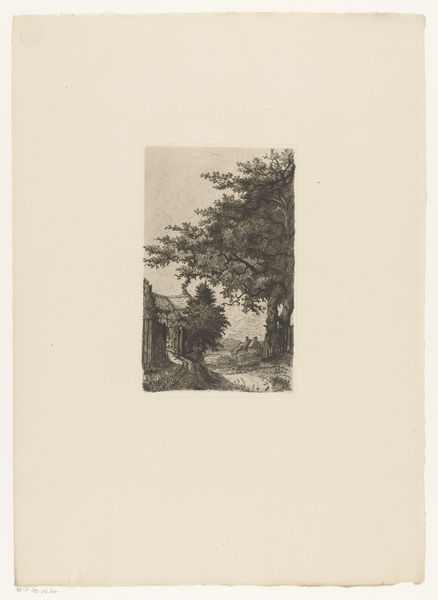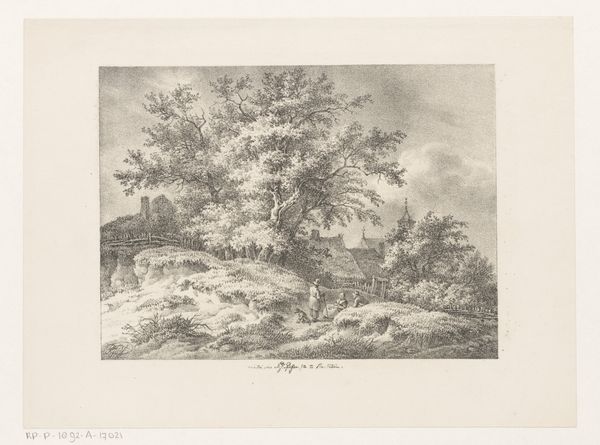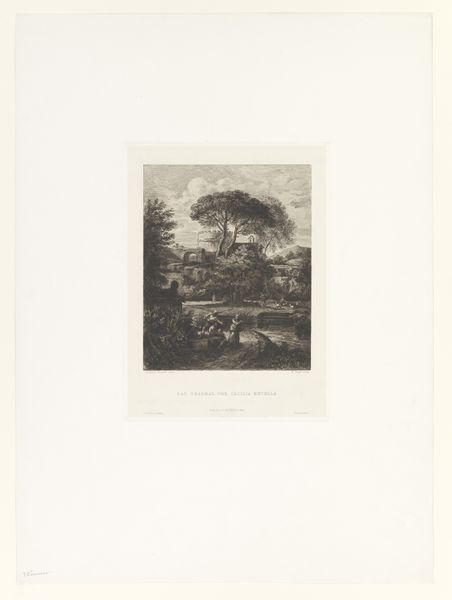
print, etching
#
dutch-golden-age
# print
#
etching
#
old engraving style
#
landscape
#
realism
Dimensions: height 239 mm, width 176 mm
Copyright: Rijks Museum: Open Domain
Curator: This small etching, likely created between 1872 and 1913, is titled "Landschap met boerderij en vee"—"Landscape with Farm and Livestock." It's by Henri Rul, rendered in that finely detailed, almost photographic style reminiscent of Dutch Golden Age landscape prints. Editor: Immediately, I’m struck by the contrast. The rough, earthy textures of the land against the delicate, almost ethereal quality of the sky. It feels melancholic, reflecting a simpler, perhaps idealized rural life. Curator: That mood resonates with the Romantic sensibilities creeping into Realism at the time. Observe how the artist used intricate lines to create depth, almost inviting us to walk that path into the heart of the scene. Editor: And that path seems very deliberate. Notice how it's the darkest element, almost urging our eye from the corner to the cluster of trees on the other side of the print, thus placing an implied division right between farm and open space. I wonder, was that farmland contested at any time? Did the farm owner have access to it all? Curator: While social commentary wasn't necessarily the primary intent, the image does tap into certain familiar historical archetypes—the lone farmer, the promise of a fruitful harvest. Look how the roof line of the farmhouse mimics the gentle curve of the landscape, grounding it. Editor: But who benefitted from that harvest? Often images like these gloss over the back-breaking labour and potential exploitation integral to these agricultural settings. Curator: True, these idyllic depictions frequently omit social complexities. Still, there’s a compelling universality in this pursuit of harmony with nature. We find those trees not to separate, but act almost as the bridge for two contrasting zones that work well in harmony. Editor: Absolutely, but harmony rarely just *happens*. Whose labor created that "harmony?" Reflecting critically allows us to question assumptions about landscape and ownership inherent within these pastoral scenes. Curator: Perhaps such reflection lets us remember how those symbols can endure even when we challenge what they actually represent. Editor: It encourages us to consider perspectives beyond the frame, urging broader dialogues regarding land use, ownership, and collective responsibility even today.
Comments
No comments
Be the first to comment and join the conversation on the ultimate creative platform.
